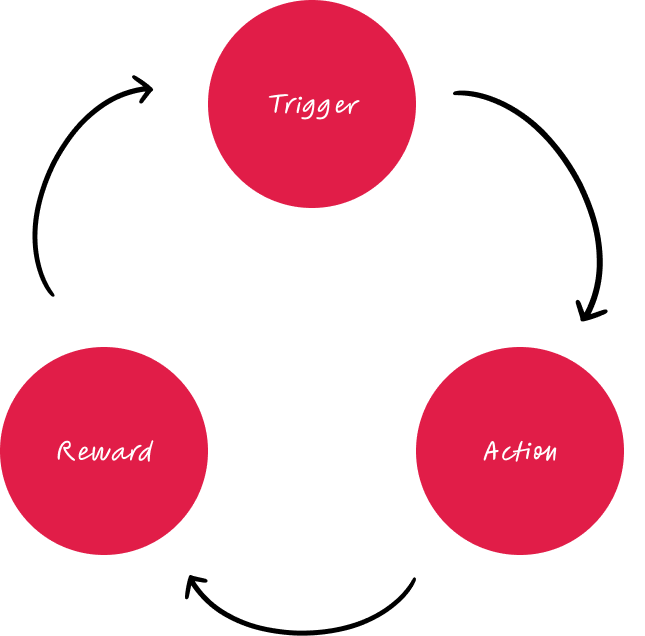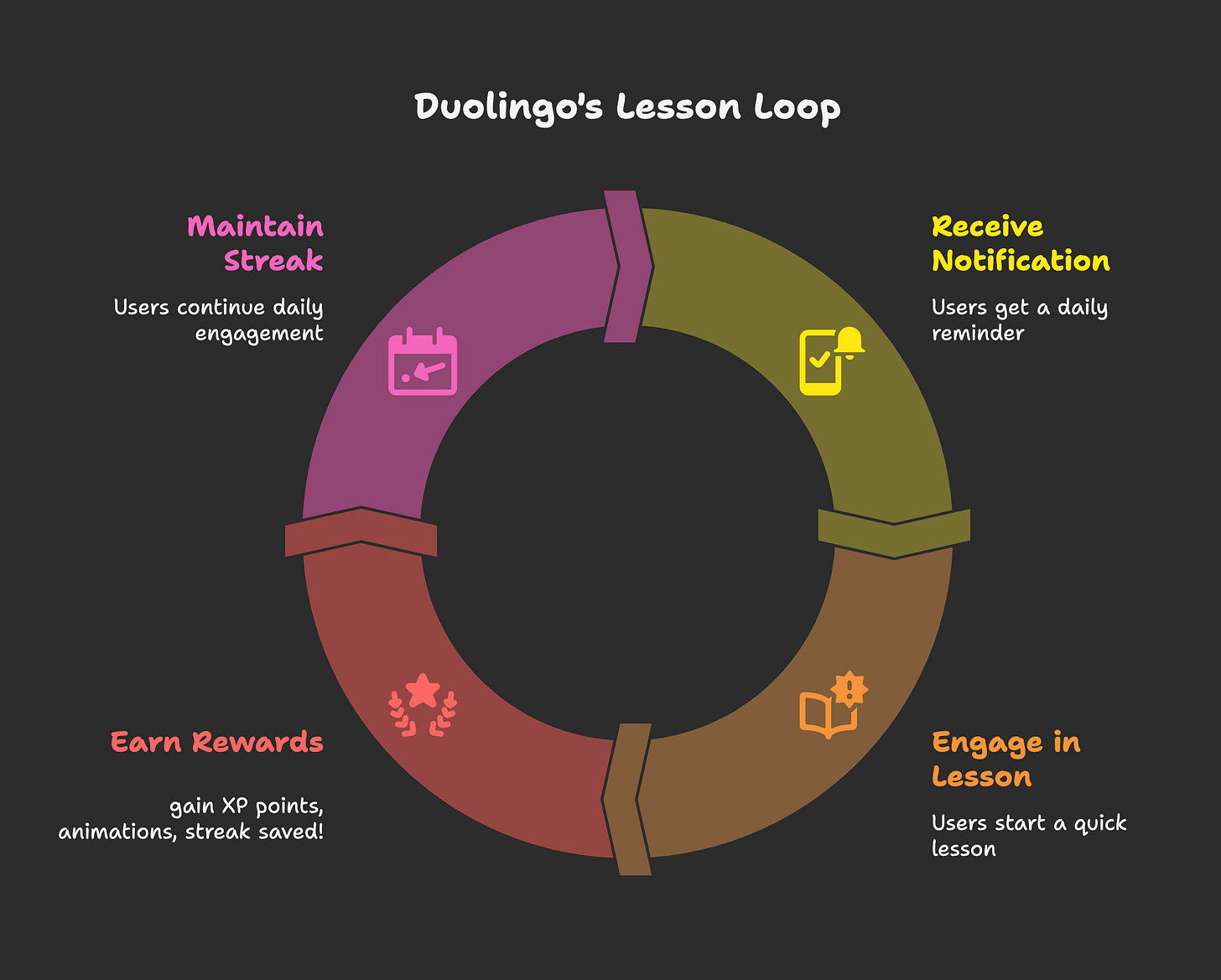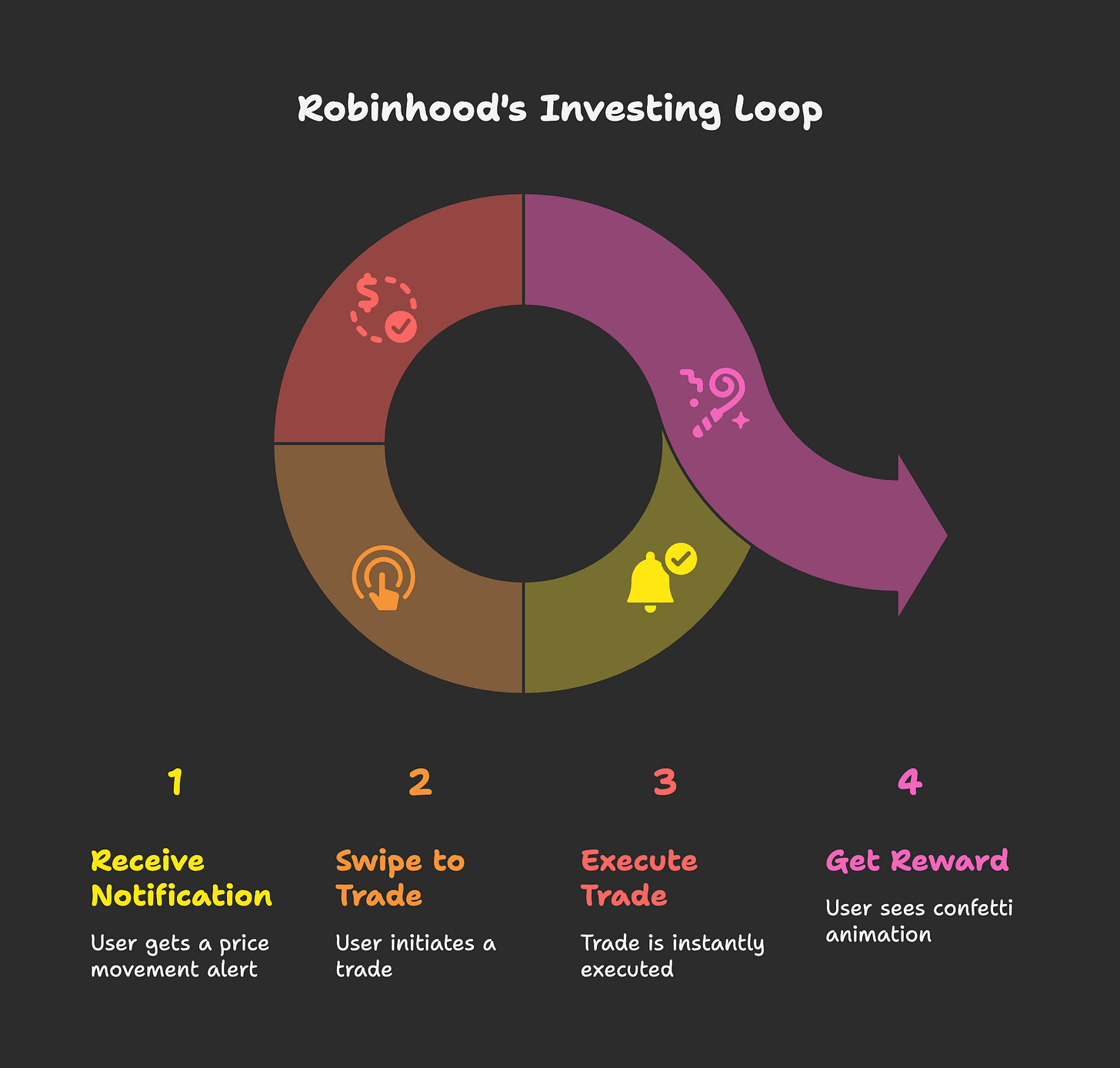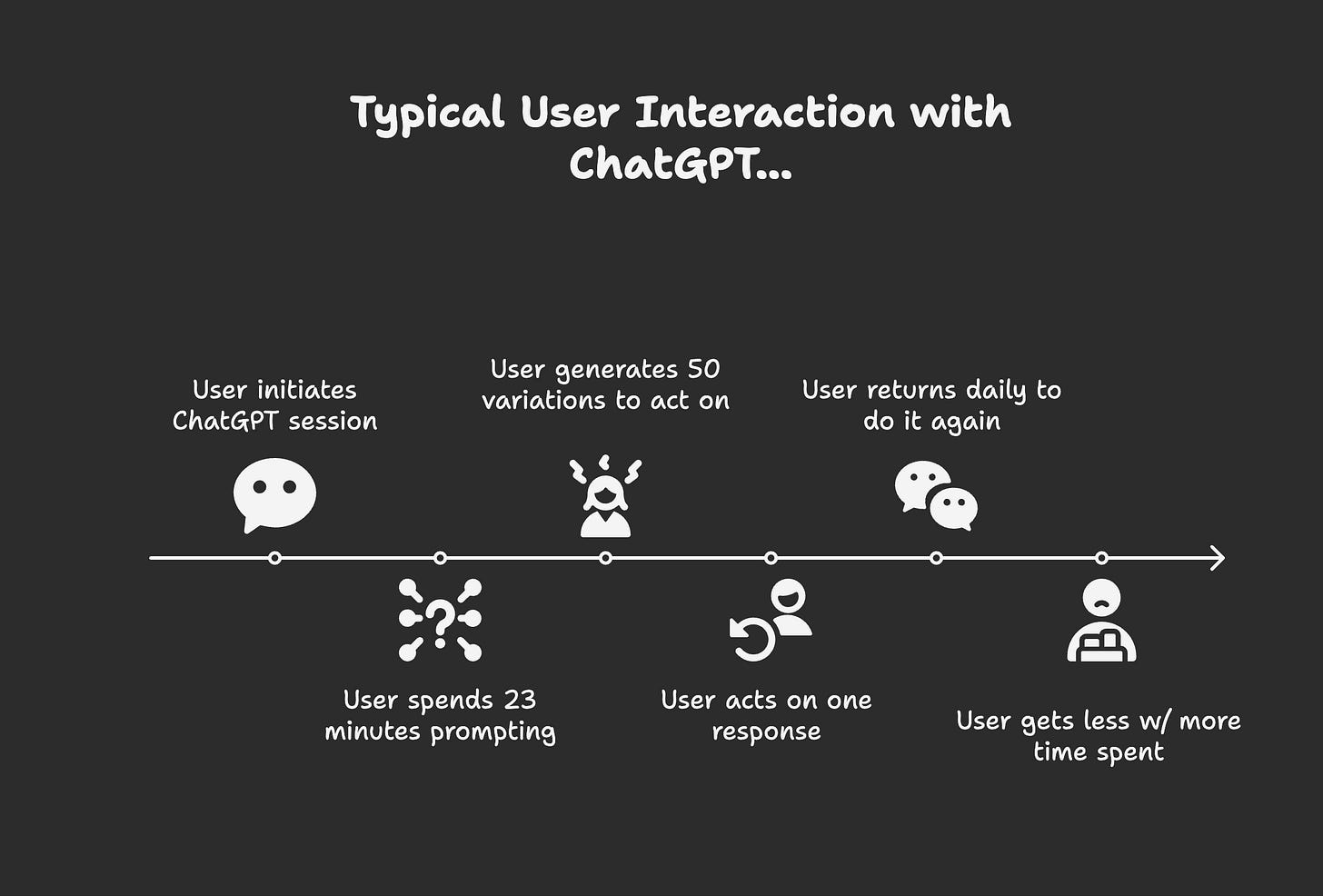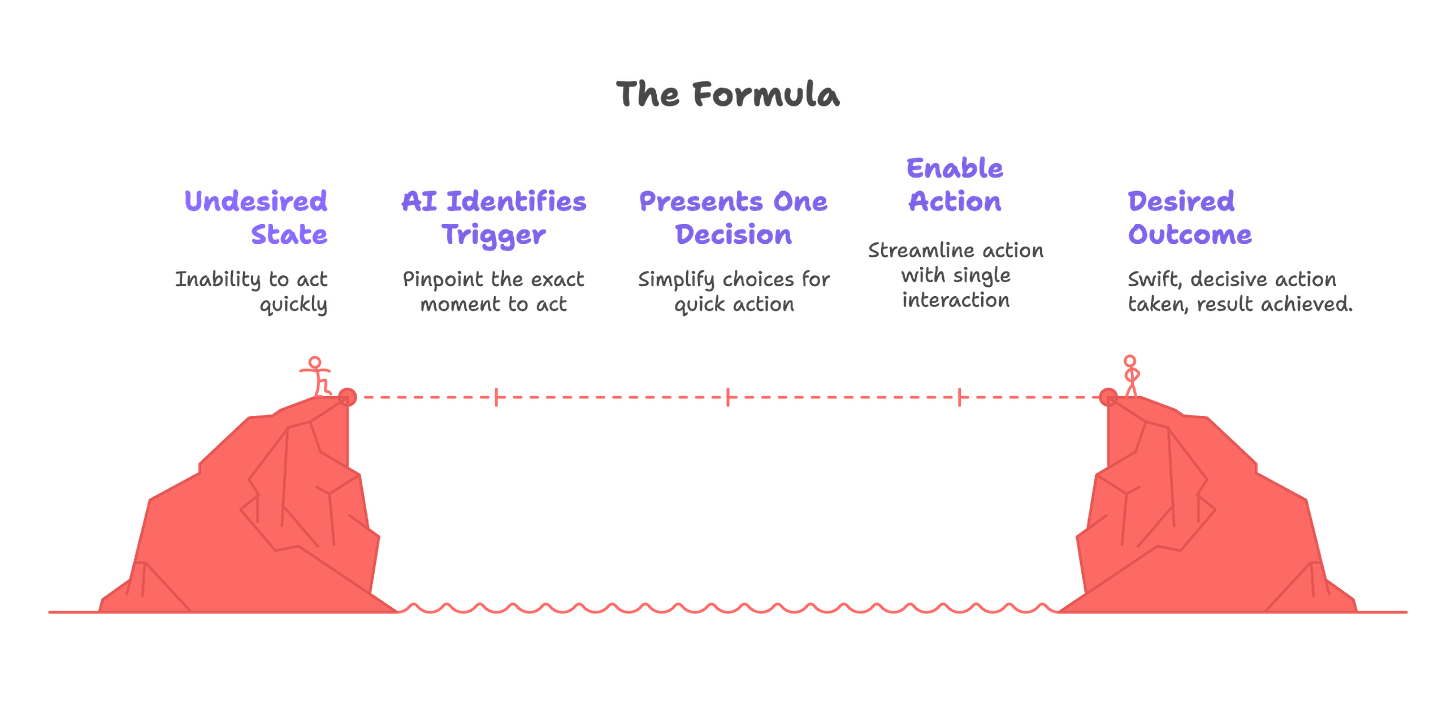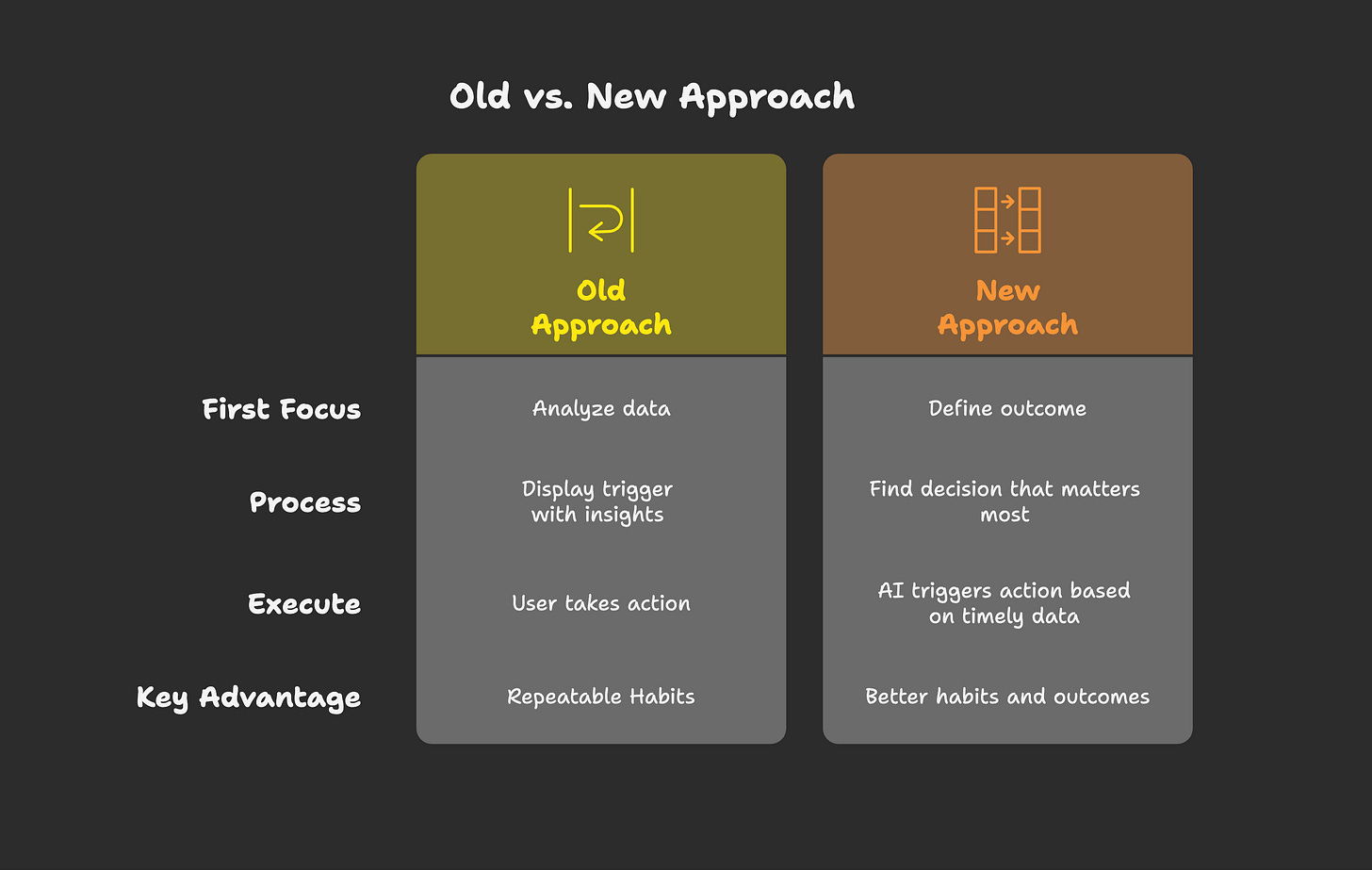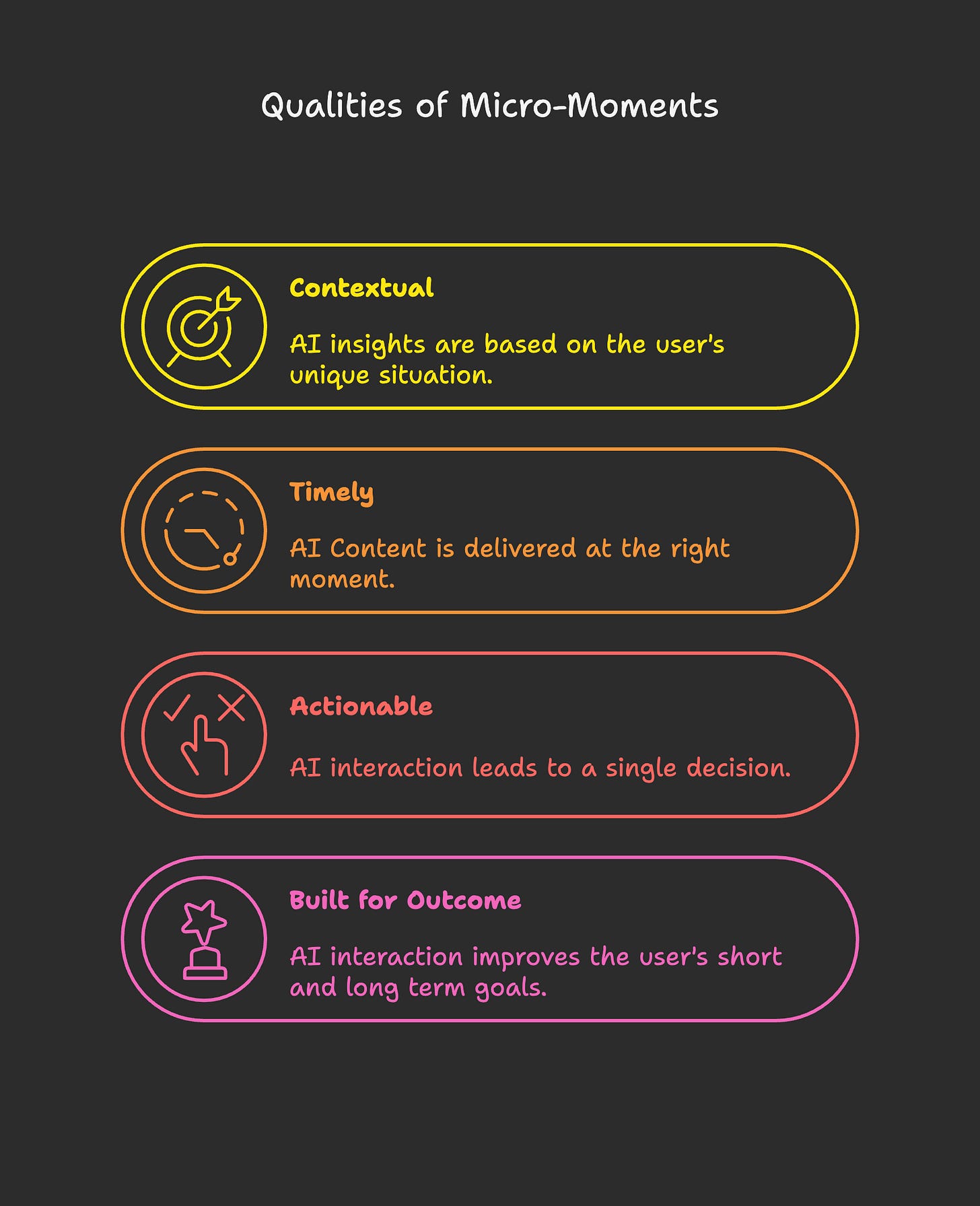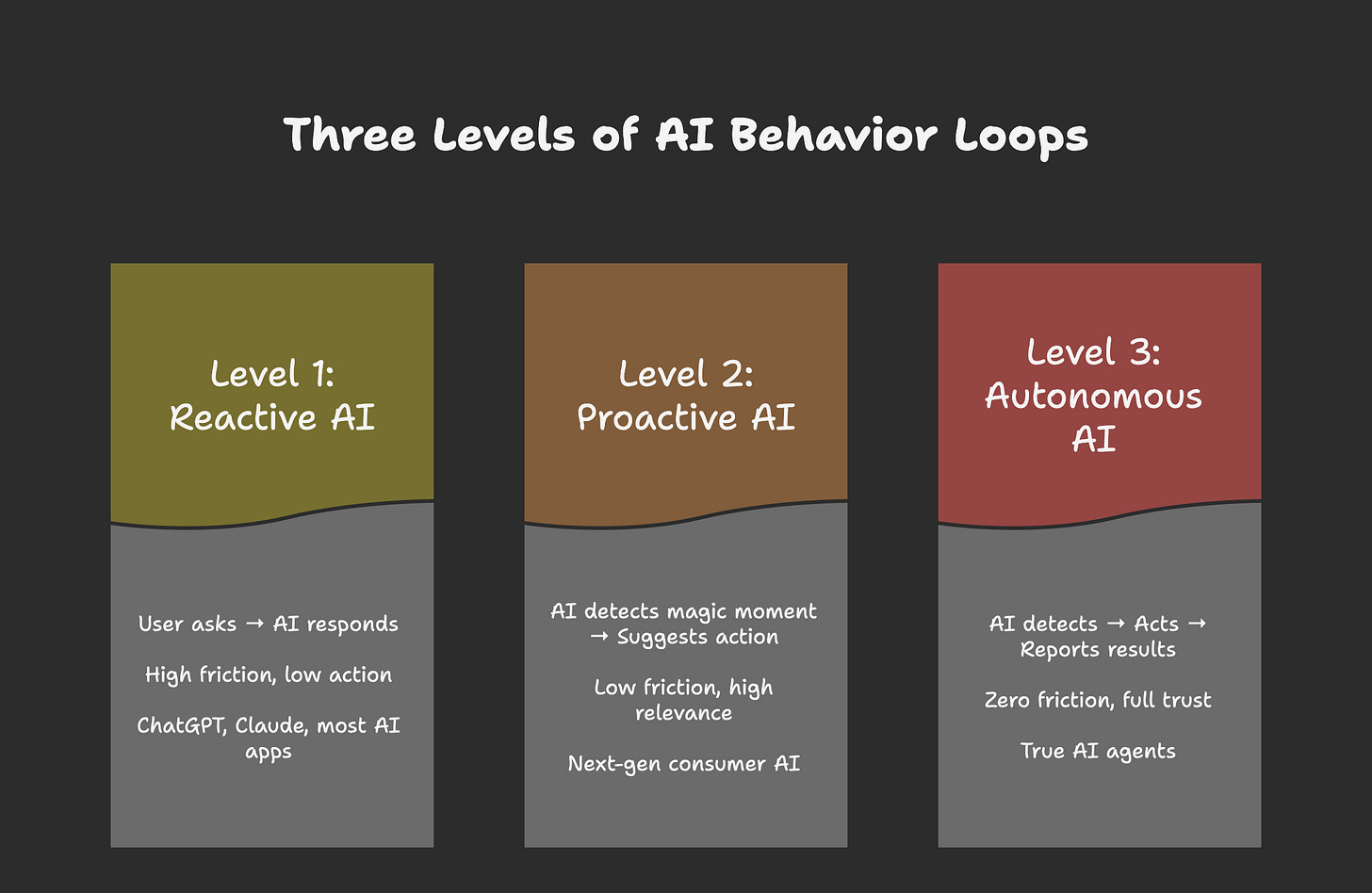The Playbook for Habit-Forming Apps is Changing, and AI is at the Center
The old formula was simple: more time in app = more value created. AI is proving that equation wrong.
This is Facts & Fallacies.
In every post, I expose one AI myth and reveal one proven truth from building real products with AI.
No fluff. Just hard lessons and actionable frameworks you can use today.
Fact: Most consumer AI apps are still playing by old rules, building elaborate ways to keep you engaged longer.
Fallacy: More AI features = more time in app = more user value.
Truth I’ve learned:
Future consumer AI products will do something radical. They will help you spend LESS time in them. One behavior changed > 1,000 insights generated.
They'll stop trying to “be” your new habit and start breaking your old ones.
The most valuable AI isn't the one you open 50 times a day. It's the one that helps you stop checking your bank balance or slack anxiously at 2am and gives you your time back.
Background: What Worked for the last 10 years
Before AI became mainstream, the most iconic consumer products mastered one thing: simple, sticky behavior loops.
They didn't need advanced intelligence. They needed good design and ways to shorten the time it took to complete these types of loops. They understood human psychology and created feedback loops so clear, so rewarding, that people came back hourly.
The Masters of the Loop:
Consumer apps aren’t just fun, they are engagement machines. This isn't by accident. It’s meticulously engineered.
Every trigger → action → reward is tested, optimized, and perfected. Product teams control every pixel, every notification, every micro-interaction to create the most retention and business value.
Here's how some of the best did it:
1. Duolingo’s Dangerous Duo
While other language apps built complex digital tutors, Duolingo built something better: a habit loop so powerful it created ‘lesson learning’ addicts that enjoy being taunted by a bird named Duo.
Trigger: Daily push notification about your lesson streak
Action: One-tap to a 5-minute lesson
Reward: XP points, animations, streak counter (yay!)
Business Impact: 40M daily active users, $780M+ revenue
Why it worked: Duolingo combined loss aversion (don't break the streak!) with bite-sized wins.
2. Robinhood: The Casino-fication of Finance
While traditional brokers built better AI analytics, Robinhood built something more powerful: confetti animations that made losing money feel like winning.
Trigger: Price movement notification (your money needs your attention!)
Action: Swipe to trade
Reward: Confetti animation, instant trade execution
Business Impact: 23M funded accounts, $2.95B in revenue
Why it worked: Robinhood understood how to reduce friction and add dopamine to the investing loop, regardless of the result.
3. Instagram: The Ego Validation Vortex
While Flickr built better photo tools, Instagram built a simpler catch: a variable reward system that made every scroll feel like pulling a slot machine.
Trigger: Someone liked your photo
Action: Open the app, feel something, post more content
Reward: Hearts, comments, infinite scroll!
Business Impact: 2B users, $47B in ad revenue
Why it worked: Instagram mixed human ego triggers with variable emotion rewards.
The formulas and loops above are predictable, replicable, and insanely profitable because they encourage users to spend more time in the products. They became the playbook every consumer product team studied and tried to copy.
Until AI entered the chat.
The Problem: Why AI Breaks Traditional Behavior Loops
Here's the paradox: AI gives us infinite power to generate insights, but engagement metrics might be lying to us.
ChatGPT has 800M weekly users. Claude is exploding. Every AI app shows hockey-stick growth.
But let's look closer at what an actual user might be doing…
This is an example of an AI “Engagement Trap”. It's busy work disguised as intelligence building.
For Users, There are Three Predictable Failures of AI Engagement
Current AI engagement metrics hide an uncomfortable truth: High usage ≠ high value.
We are still measuring time spent and messages sent, when we should be measuring problems solved. Here are the three predictable failures killing AI user experiences today:
1. The Insight-to-Action Gap
✅ Traditional apps:
See notification → Do Something → See Outcome → Feel good
❌ Chat AI apps:
Ask question → Read essay → Feel overwhelmed → Close app
Example:
Ask AI about your finances, and you get a 2,000-word analysis of your spending patterns. Great. Now what?
The user got "value" but was not prompted to take action. That's not a win - that's a failure dressed up as engagement.
2. The Paradox of Choice on Steroids
AI can generate 100 ways to save money
Or 50 meal plans
Or 1,000 business ideas
Users don't need more options. They need the RIGHT option, delivered at the RIGHT moment, with a CLEAR next step.
3. The Trust Deficit
When Duolingo says you have a 10-day streak, you believe it. When AI says "Based on my analysis..." users think:
Is this hallucinated?
Should I double-check?
What if it's wrong?
The current cognitive load of AI verification destroys the magic of taking action and getting the reward.
For Builders, AI Is Challenging Our ‘Known’ Superpowers
We traded our predictable builder superpowers for infinite chat windows and wonder why retention isn’t what we’d thought it would be.
1. The Control Problem:
Old world: A/B test button colors for 0.2% lift
AI world: Every response is unique, untestable, untrackable
2. The Metrics Lie:
Time in chat ≠ value created
Messages sent ≠ problems solved
DAU means nothing if users leave frustrated
3. The “Chat Trap”:
We have defaulted AI experiences to chat because that's what LLM’s gave us first. But chat is:
The highest friction interface (typing)
The slowest path to action (reading)
Not great for mobile (where users spend 99% of their attention)
We built the equivalent UX of making users write emails to use Instagram.
This is a little insane.
The Solution: A New Behavior Loop Framework
For the last couple months I've been building Velzee: an AI finance app that analyzes your money across all accounts and tells you exactly what to do to hit your goals faster.
Want to try it? Sign up for Velzee’s beta launch here.
Through building this, I’ve developed a formula for how AI products can drive engagement by delivering outcomes with less time and effort, not just analyzing data to prompt user behavior.
Here's the formula:
1. Start with the Desired Outcome, Not the Data
❌ Old approach:
Analyze available data → Display insights → Get users to act
✅ New approach: (work backwards!)
Define the outcome → Find the decision that matters most → Use AI to trigger action at the perfect moment.
Both are built to get users to an outcome, but they prioritize different things to get them there. The moat isn’t in having data. It’s in knowing which decision to surface and when. That’s where AI product design and prompt engineering become the new foundation for product strategy. We need to rethink habit loops through a new lens of behavioral psychology to guide users to outcomes faster, not just show them more information.
Here is a simplified example:
❌ Old Approach: "Here's your financial breakdown. You spent $X on dining..."
✅ New Approach: "You have $220 extra this month. Move it to ‘X,Y,Z’ investments?”
We reverse-engineer the AI prompts from the action we want users to take, then use AI to find the perfect trigger moment.
2. Design AI prompts for Micro-Moments, not dashboards
Instead of passive data displays, use AI prompts to identify high-leverage moments and trigger the right action.
In Velzee’s case, we’re building for micro-moments like…
Cash moment: "You just got paid. Last month you saved 12 percent. Want Velzee to show you exactly how to beat it?" → [Set 15 percent]
Danger moment: "Unusual $400 charge detected. Block it and have Velzee rebuild your budget for the week?" → [One tap]
Opportunity moment: "You're losing $200/mo in fees. Switch to 'X' and gain $2,400/year? [Switch now]"
The Mindset Shift: AI Outcomes > AI Features
❌ Stop thinking about:
How smart your AI is
How many features it builds or optimizes for you
How much data you process as a result of it
How personalized your responses are
✅ Start thinking about:
What decision comes next?
What's the smallest useful action to get a user there?
How do we build trust for the next loop?
What outcome did we actually create?
Where We Are Going: The Three Levels of AI Behavior Loops
Here's what changes with AI: Instead of apps trying to hook us, we're deciding how much control to hand over. And that decision - how much agency we give AI - will determine which products win and which become obsolete.
Most founders are building at Level 1 without realizing they're already being lapped by teams thinking in Level 2 and 3.
Most builders are stuck at Level 1 because they're thinking like technologists, not behaviorists.
The Business Model Alignment
Chat-based AI burns money on every message. But when you optimize for outcomes instead of conversations, the economics flip from unsustainable to inevitable.
❌ Traditional AI Apps: More usage = more cost = need more revenue
✅ Behavior-Driven AI: Better outcomes = higher retention = sustainable growth.
When your AI helps users save $500/month, charging $10/month feels like a bargain. When your AI just regurgitates insights and chats, even $5 feels expensive.
Value = Outcomes Created ÷ Effort Required.
What This Means For You:
If you're a builder: Stop counting API calls. Start counting user actions and if they result in a true outcome.
If you're an investor w/ a focus on consumer products: The next unicorns won't have the best models. They'll will have mastered the best micro-moments and build a relationship with their users like never before.
If you're a user: Demand more from your AI products. If it's not changing your behavior for the better, it's just expensive autocomplete.
The Bottom Line
We spent a decade perfecting digital addiction. The next decade is about perfecting digital assistance.
The behavior loops are more complex because the stakes are higher. We're not just keeping users scrolling, we're helping them live better lives. We're not optimizing for time spent, we're optimizing for time saved. We're not building engagement, we're building empowerment.
And that's exactly why it's a good thing.
The bar is higher. The challenge is harder. The impact is real.
Your move: Look at your AI product right now. Count how many times users type before they get value. Count how many decisions they make versus how much they read.
If it feels like ChatGPT with your logo, you're building yesterday's product with tomorrow's technology.
The future belongs to builders who understand:
The best AI is the AI users never see, but always feel.


